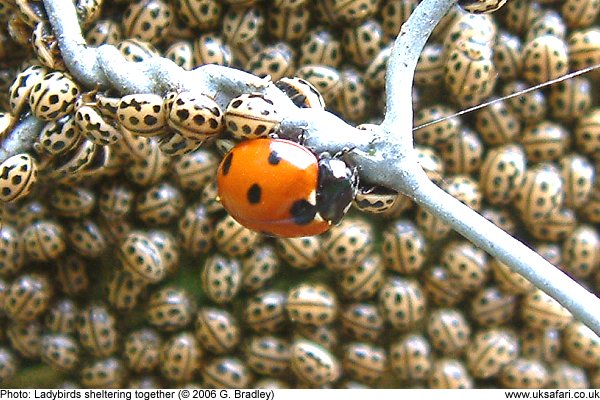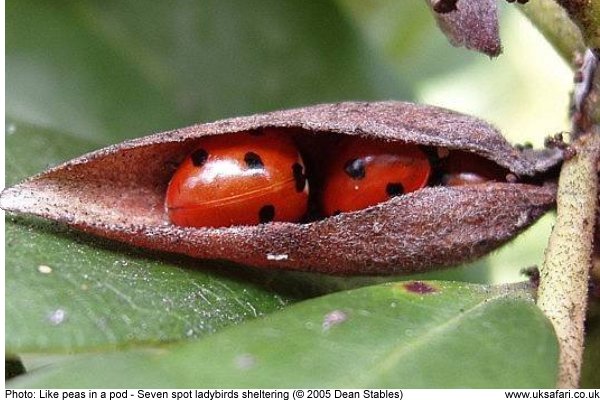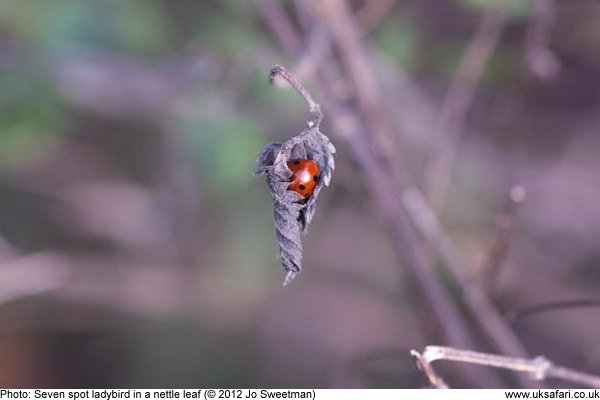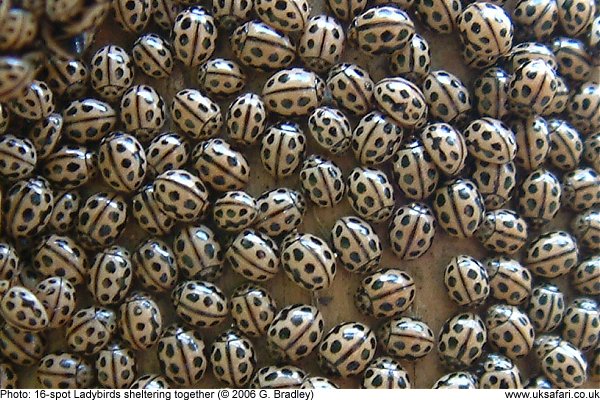 Ladybirds
Ladybirds
News > Ladybirds >

In late autumn and early winter it's not uncommon to find ladybirds huddled together in large groups, sometimes numbering thousands. Ladybirds hibernate through the winter as adult insects, so this is the time when they start looking for suitable sites. Different species will usually hibernate in different places. Some shelter under tree bark, others sleep under leaf litter etc.
In the summer months ladybirds give off a faint scent, which is thought to deter potential predators. In the winter this 'ladybird perfume' could be one of the ways they find each other at hibernation sites.

Several people have e-mailed us recently to say they've found ladybirds in their homes. Now that the colder November weather has set in the ladybird's natural food supply has dried up, and that's when we see more ladybirds coming into our homes. This isn't always the best place for a ladybird to hibernate.

In a more natural environment they would sleep through to March or April, but the heating in our homes wakes them up prematurely. If they wake up in the middle of winter and there are no aphids for them to eat they simply starve to death.

If you have the time and patience it's a good idea to move them to an outdoor habitat where they'll remain frost free and where they won't be attacked by predators. A shed or garage will do, or an insect house, which you can buy at most garden centres.
If you don't want to fork out on a ready-made insect house there's a page on UK Safari showing how to make an insect hotel for next to nothing (link below).
Use a pooter, or a soft artist's paintbrush to coax the ladybirds out of crevices and into a container. You can then transfer them to the insect hotel. If you try to pick them up with your fingers you could squash them or break their limbs.
You may discover that some of the ladybirds in your home are the Asian or Harlequin ladybirds. You might want to consider an alternative relocation strategy for these insects to prevent them eating the native ladybirds.
More info at: How to Make an Insect Hotel (for next to nothing)

 Popular Pages
Popular Pages
Amphibians, Bats, Badgers, Beetles, Birds, Birds of Prey, Bumble Bees, Butterflies, Caterpillars, Creepy-Crawlies, Deadly Spiders, Dolphins, Dragonflies, E-Postcards, False Widow Spiders, Free Newsletter, Frogs, Fungi, Garden Spiders, Glow-Worms, Grey Squirrels, Hedgehogs, House Spiders, Ladybirds, Mammals, Marine Mammals, Moths, Owls, Reptiles, Spiders, Toads, Trees, Wildlife Hospitals
© Copyright 2017 G. Bradley - UK Safari | About Us | Links | Contributors



 Related Pages
Related Pages
